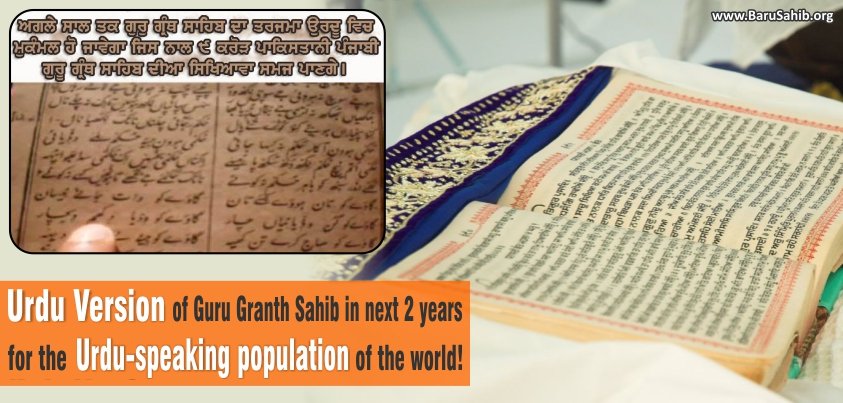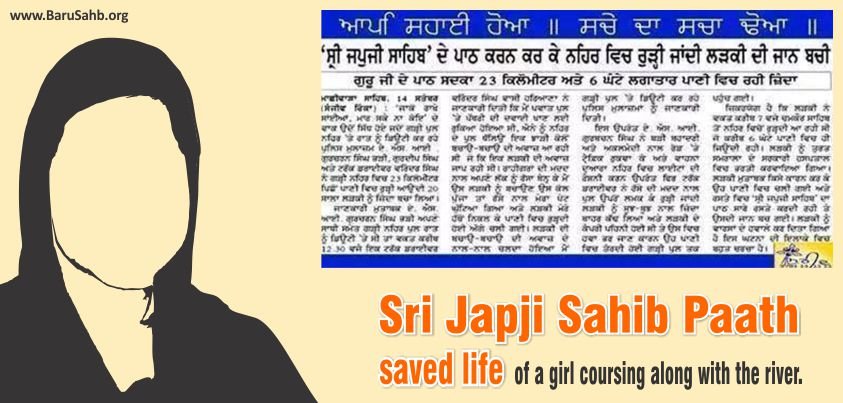Guru Granth Sahib and the Muslims – The Flip Side!
The story of conflicts between some of the Gurus of Sikh religion and the Muslim rulers is well-known. The emerging religion of the Sikhs during the Mughal era was perceived by some of the rulers and their vassals to be a political threat. As a sizeable segment of disgruntled peasantry started joining the Sikh movement […]
The story of conflicts between some of the Gurus of Sikh religion and the Muslim rulers is well-known. The emerging religion of the Sikhs during the Mughal era was perceived by some of the rulers and their vassals to be a political threat. As a sizeable segment of disgruntled peasantry started joining the Sikh movement in Punjab and beyond, its political and social implications were not lost on perceptive minds, especially among the orthodox section of aristocracy.
Some of the Gurus faced persecution. A few were even executed for their religious and political views. Consequently, their followers at times had to bear the brunt of Mughal might. This is one side of the story. The other side remains largely untold. There was also a good number of Muslim musicians, scholars, Sufi saints, notables, including some royals like prince Dara Shikoh, who were not only sympathetic to the Sikh cause but also supported it in different ways. And this is what ‘Muslman Kahavan Muskal’ (It takes a lot to be a Muslim), a remarkable book by Iqbal Singh, implicitly tells us. The book has been published from Amaritsar in Shahmukhi, one of the Punjabi scripts derived from the Arabic that is used on this side of Punjab. Iqbal Singh, is well-versed in the Sikh religious literature.
Granth Sahib, we all know, is a huge collection of sacred verses, a foundation on which stands the Sikh religious and metaphysical edifice. It contains not only the sacred verses of the Gurus but also the selections of Bhagti or Sufi poetry thought to be compatible with the vision of Baba Guru Nanak, the founder of the Sikh religion. Granth Sahib in general and ‘Nanak Bani’ (the verses of Baba Guru Nanak) in particular have a lot of material which directly or indirectly refers to the Muslim rulers, their politics, faith, religious practices, saints and score of other things related with the newly-established Muslim society.
Iqbal Singh has painstakingly collected all the material that we find scattered throughout the Holy Granth and has arranged it in a systematic way in his book providing us a holistic picture of the historical relationship between the Muslims and the Sikhs, spreading over centuries. The book is a must read for anyone interested in discovering the historical context of the roots of love-hate relationship that existed and perhaps still exists, though to a much lesser degree, between the Muslims and the Sikhs. The Muslim and the Sikh narratives in Punjab though different are uniquely interlinked and so is their destiny in the cultural and social terms at least. The reference material one finds in the book has a material as well as symbolic value. It can help build bridges between two important communities of Punjab.
A journey of self-discovery ‘Velay day pichhe pichhe’ (In the foot-steps of time) is a travelogue by Afzal Tauseef published by Institute of Language and Culture. Afzal Tauseef is one of our senior intellectuals and fiction writers deeply involved in the cultural politics of Punjab.
Her book narrates a moving story of her visits to Indian Punjab where she was born in a prosperous land owning family. She was a growing child when came the Partition and with it she lost everything. She shares her vivid memories of what happened and how all of a sudden her paradise with its verdure, flora and fauna and blissful community life was lost.
The communal riots led by lynching mobs forced her family which lost some of it members, to migrate to Pakistan. The tragedy of being uprooted, incomprehensible to young and old alike changed the course of life for her and her family permanently. Standing on the soil where she was born but forced to flee by the whirlwind of circumstances, she reliving the excruciatingly painful existential experience, wails and laments.
With her artistically articulated wailing and lamenting Afzal Tauseef creates a historically oriented cultural context where her sigh transforms itself into a cry of millions of the Punjabis who went through the same hell in the aftermath of the Partition in 1947. Her emotionally charged narrative provokes us to pause and ponder over the malady that inflicted deep a wound on the collective psyche of Punjab. With the passage of time the wound has healed though but the ugly scar it left is still there to remind us of what we did to ourselves in our collective frenzy whipped up by the communalists and fanatics of all hues.
The content is replete with emotional undertones but skillfully crafted prose does not let itself to be loaded with the kind of kitsch one usually encounters in the Punjabi writings dealing with trauma of the Partition. This is a book of sorrow that may comfort many with its reconstruction of a heart wrenching orgy of hate that we want to delete from our collective memory but its stubborn specter keeps coming back to haunt us all.
Tender verses
‘Main Chaitar nahin Chakhia’ (No whiff of April for me) is a new book of poetry by young poet and writer Khaqan Haydar Ghazi published by Sanjh Publications.
Khaqan employs different genres like free verse and lyrics for his creative expression. He seems to be very passionate about exploring the emotional and psychic effects the changing seasons imperceptibly have on individual.
A number of poems deal with experiencing ‘Chaitar’ which is a harbinger of spring and a metaphor of re-birth. It reminds us of Chaucer’s famous verse “Whan that Aprille with his shoures soote” that inspired T.S. Eliot’s line “April is the cruelest month”. Khaqan’s poetry generally creates a sweet-sounding romantic ambiance underpinned by angst. Simplicity of the language and clarity of the experience impart palpable freshness to what he expresses in an unpretentious manner. “A little more than friendship and a little less than love is what twists the relationship that is there between you and me”.
~ By Mushtaq Soofi
~ Source: http://www.dawn.com/











